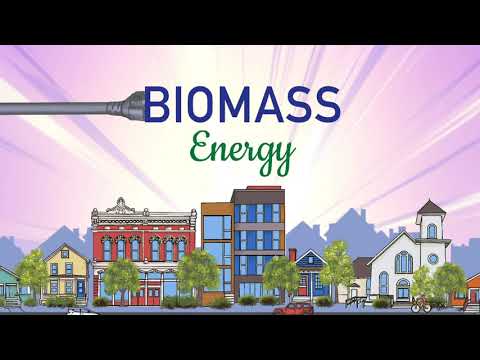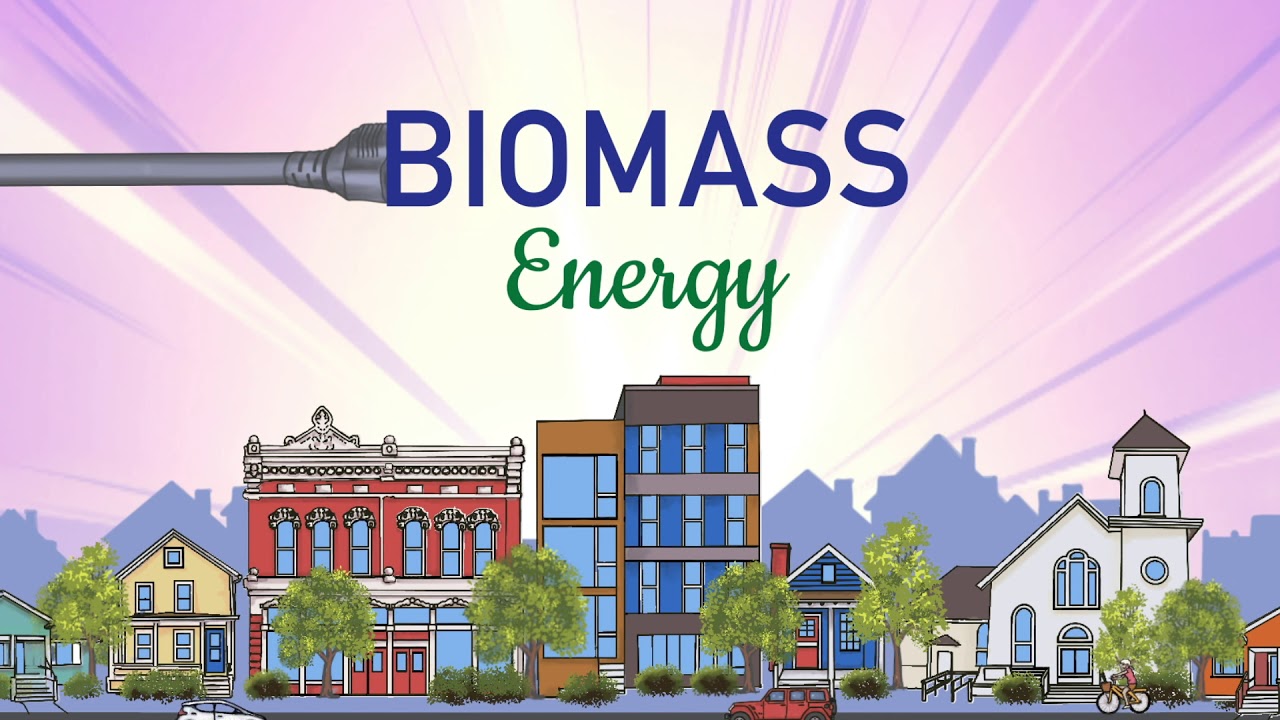Bioenergy is a fascinating field that harnesses the power of nature to provide sustainable and renewable energy solutions. This innovative concept revolves around utilizing organic materials, such as plants, agricultural waste, and even algae, to generate electricity, heat, and fuel. What makes bioenergy particularly captivating is its potential to address both environmental and energy challenges simultaneously. By converting biomass into usable forms of energy, we can reduce greenhouse gas emissions and dependence on fossil fuels, paving the way for a cleaner and greener future. Moreover, bioenergy offers an array of exciting possibilities, ranging from producing biofuels for transportation to generating electricity through biogas, biomass power plants, and even advanced biofuels like cellulosic ethanol. The versatility of bioenergy is truly remarkable, as it can be applied on various scales, from small-scale household digesters to large industrial facilities. Embracing bioenergy not only promises a sustainable energy source but also opens doors for job creation and economic growth. With the potential to revolutionize the energy landscape, bioenergy is an awe-inspiring concept that holds immense promise for a more sustainable and prosperous world.

What is Bioenergy?
| Aspect | Description |
|---|---|
| Definition | Bioenergy is the energy derived from organic matter, such as plants, crops, and agricultural residues, as well as from animal waste and by-products. It is a renewable energy source that can be converted into various forms of usable energy, including heat, electricity, and biofuels. |
| Types of Bioenergy | There are several types of bioenergy, including: |
| – Biomass Energy | This refers to the conversion of organic materials, such as wood, crops, and agricultural residues, into heat and electricity through processes like combustion, gasification, or anaerobic digestion. |
| – Biofuels | These are liquid or gaseous fuels made from organic materials, primarily crops like corn, sugarcane, and soybeans, as well as agricultural and forest residues. Biofuels can substitute or blend with traditional fossil fuels in transportation or heating applications. |
| – Biogas | Biogas is a mixture of gases produced by the breakdown of organic matter in the absence of oxygen. It is mainly composed of methane and carbon dioxide and can be captured from landfills, wastewater treatment plants, and anaerobic digesters to generate heat, electricity, or be upgraded to natural gas quality for use in vehicles or injection into the gas grid. |
| – Bioelectricity | This refers to the generation of electricity from biomass through direct combustion or by converting it into biogas, which can then be used in gas turbines or engines to produce electricity. |
| Advantages | Bioenergy offers several advantages: |
| – Renewable and Sustainable | As organic matter can be regrown or replenished, bioenergy is considered renewable and sustainable, unlike fossil fuels which have finite reserves. |
| – Reduces Greenhouse Gas Emissions | When compared to fossil fuels, bioenergy generally releases fewer greenhouse gas emissions, contributing to mitigating climate change. |
| – Utilizes Organic Waste | Bioenergy systems can make use of organic waste materials, such as agricultural residues and animal manure, reducing their environmental impact and providing an additional revenue stream for farmers. |
| – Enhances Energy Security | By diversifying the energy mix, bioenergy reduces dependence on imported fossil fuels, strengthening energy security and promoting local economic development. |
“Biomass: Harnessing Organic Waste for Renewable Energy”
The Power of Bioenergy: Fueling a Sustainable Future
Bioenergy is a renewable energy source that is derived from organic matter, such as plants or animal waste. It has gained significant attention in recent years as a potential solution to the world’s growing energy demands, while also addressing the urgent need to reduce greenhouse gas emissions. In this article, we will explore what bioenergy is, how it works, and its potential benefits and challenges.
What is Bioenergy?
Bioenergy refers to the energy that is obtained from biomass, which is any organic matter that can be used as fuel. This can include agricultural crops, forestry residues, algae, and even organic waste materials. Bioenergy can be converted into various forms of energy, such as heat, electricity, or even transportation fuels like biodiesel and bioethanol.
The Process of Bioenergy Conversion
Bioenergy conversion involves transforming biomass into usable energy through various processes. The most common methods include combustion, fermentation, anaerobic digestion, and pyrolysis.
Combustion is the process of burning biomass to generate heat, which can then be used for heating or electricity production. It is the most straightforward and widely used method, particularly in biomass power plants.
Fermentation is a biochemical process that converts biomass into usable energy sources such as bioethanol or biogas. This method is commonly used in the production of biofuels.
Anaerobic digestion is a natural biological process where microorganisms break down organic matter in the absence of oxygen. This process produces biogas, which is primarily composed of methane and carbon dioxide and can be used for electricity generation or as a heating fuel.
Pyrolysis is a thermochemical process that involves heating biomass in the absence of oxygen. This process produces biochar, bio-oil, and syngas, which can be used for various energy applications.
The Benefits of Bioenergy
Bioenergy offers several advantages over conventional fossil fuels:
Renewable and Sustainable: Biomass is derived from organic matter, which can be continually replenished through sustainable practices like reforestation and crop rotation. Unlike fossil fuels, bioenergy does not contribute to the depletion of finite resources.
Reduced Greenhouse Gas Emissions: While bioenergy combustion does release carbon dioxide, it can be considered carbon-neutral because the carbon emitted during combustion is recaptured by new biomass growth. This closed carbon cycle helps to mitigate climate change by reducing net greenhouse gas emissions.
Waste Management: Bioenergy can utilize organic waste materials, such as agricultural residues or food scraps, reducing the need for landfill disposal and minimizing environmental pollution.
Energy Security: Bioenergy can be produced locally, reducing dependence on imported fossil fuels and enhancing energy security for countries.
Challenges and Considerations
While bioenergy holds great promise, it is not without its challenges:
Competition with Food Production: As bioenergy production requires biomass, there is a concern that it may compete with food production or encroach upon valuable agricultural land. Careful planning and sustainable practices can help mitigate these concerns.
Environmental Impact: The cultivation and harvesting of biomass can have environmental impacts, such as soil degradation and water pollution. Ensuring sustainable practices and protecting natural ecosystems are essential for mitigating these effects.
Technological Advancements: Further research and development are needed to improve the efficiency and cost-effectiveness of bioenergy conversion technologies. Advances in technology can help optimize bioenergy production and reduce its environmental footprint.
The Future of Bioenergy
The potential for bioenergy to contribute to a sustainable future is immense. As the world strives to reduce its dependence on fossil fuels and curb greenhouse gas emissions, bioenergy offers a viable alternative. Continued research and development, along with supportive policies and investments, are crucial for unlocking the full potential of this renewable energy source.
Bioenergy has the power to transform our energy landscape, providing a cleaner and more sustainable future for generations to come.
In conclusion, bioenergy is a renewable energy source that harnesses the power of organic matter to generate heat, electricity, and transportation fuels. Through various conversion processes, such as combustion, fermentation, anaerobic digestion, and pyrolysis, biomass can be transformed into usable energy. The benefits of bioenergy include its renewability, reduced greenhouse gas emissions, waste management capabilities, and enhanced energy security. However, challenges such as competition with food production, environmental impact, and technological advancements must be addressed to fully unlock the potential of bioenergy. With continued research and development, bioenergy can play a significant role in achieving a sustainable future.
